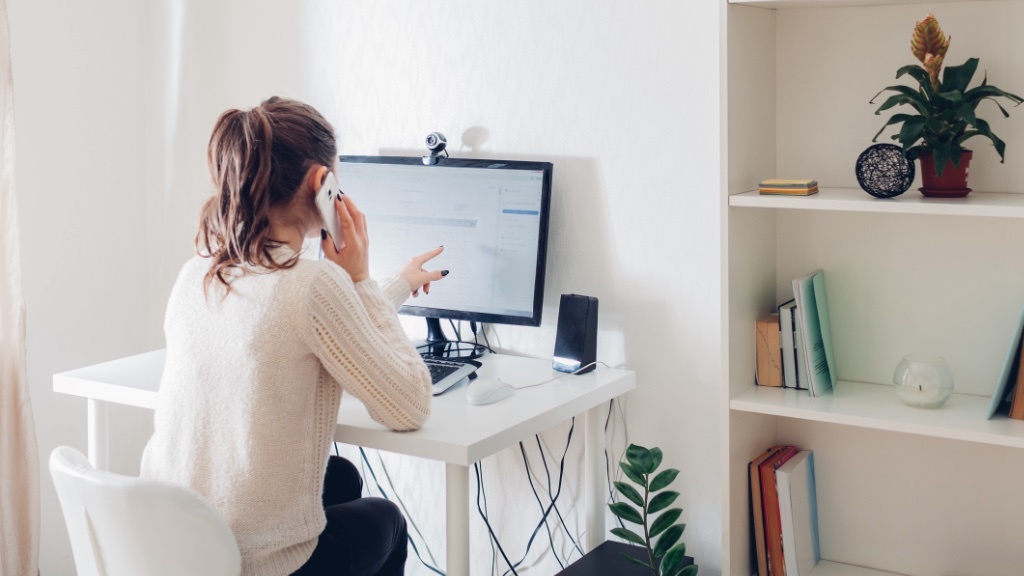Hold on to your structure when times are uncertain
Datum: 2024-11-28 09:16

Times are definitely difficult and when the future feels uncertain and it is hard to know what to expect, it is easy to lose both tempo, motivation, hope, and your good mood.
For you who prefer listening to reading, this post is also available as an episode of the “Done!” podcast:
Step by step
When times are turbulent and you are not sure where things are going, it feels great to take conscious action to get a grip on the situation and ensure that you stick to your plan, keep up the pace, and move in the direction you want to go. This pandemic will be over soon enough and the best we can do at the moment is simply to keep working methodically and in a structured way in what we believe to be the right direction — one step at a time.
Helping yourself
It is at times like these when we greatly benefit from the structure we have already established. Hold on to your structure as an anchor when everything around you fluctuates and moves, and you will soon see the dark clouds parting as these strange and uncertain times come to an end.
Do this
How can you hold on and to what, exactly? Well, I am thinking of four aspects of your structure in particular:
- The morning routine. If you have a morning routine you always perform to get going with the right things and set the tone for the day, now is the time to really stick to it. If you do, you will not waste precious time on things you later regret doing instead of important things. You will pick up the pace early in the day and will start ticking tasks off your list, which will make you feel a lot better.
- Work in intervals. In order to keep the tempo up but also remember to take frequent breaks, work in intervals using a timer. Work for 25 minutes and take a break for 5 minutes, just as the Pomodoro-method suggests we do, or work for slightly longer intervals of 45 minutes and take a longer break of 15 minutes every hour. If you are facing a difficult task, try working for 10 minutes, take a mini-break of 2 minutes, and then repeat this pattern 5 times. Before you know it you have worked for a full hour but also gotten a whole handful of small breaks.
- Respect your work-related ”alone time”. Several people have told me that they have more meetings than they usually do due to them happening on digital platforms such as Zoom or Teams. Perhaps this is so because you can no longer just ”pop in” to see a colleague but have to schedule a meeting to check in with them. This is why you should schedule time for the tasks you need to have some peace and quiet to finish just as you ordinarily do — but perhaps you now need to reserve a bit more time than you usually would. Estimate how much ”alone time” you need to finish all your tasks during a regular week and schedule this time as single hours where there is space in the calendar, thus ensuring you really have the time you need to finish all your tasks.
- Separate work and free time. When work has moved from an office into your home where you spend quite a portion of your free time, the lines tend to blur and you might suddenly find yourself working when you are actually free. There is always more work that could be done — regardless of how much you do. This is why you need to make it clear to yourself when you have stopped working for the day. Lock your computer away in a cupboard, drape your desk with a sheet, or place some kind of hood over your computer screen so that you will have to make a distinct effort to start working. If you do this, it will be much easier to catch yourself ”getting back to work” when you are not supposed to than it otherwise might be and you will respect your free time to a greater extent.
Staying in control as circumstances sway
If you stick to and hold firmly on to your structure (and let the structure have a firm grip on you as well), you will get things done faster and maintain a steadier pace than you would without it. You will get through any tough times methodically and be able to do whatever you need to right now which will make your work and life easier later on. Get a grip and stay in control of the situation instead of letting circumstances control you.
How are you doing right now?
What part of your structure is most important to you right now? What trick will you make use of to tackle tricky situations you might find yourself in? It feels more important than ever to support one another and I am glad to do my part by sharing your tips and advice with others — so feel free to email me and I will make sure to pass your tips and tricks on to others in need of them.
(Do you know what the risk of breaking your routine is?)
Want more?

If you want more tips on how to create good structure at work, there are many ways to get that from me - in podcasts, videos, books, talks and other formats.




